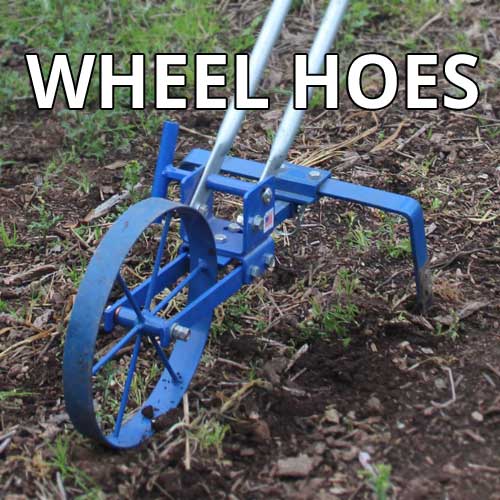How to Make Grenadine
Posted by David Grau on
Originally Posted on October 12, 2013
Fall is definitely in the air in our part of Northern California. Windy days have leaves blowing around, and acorns are falling in abundance. We've heard from gardeners in some parts of the country where blizzards have deposited three to five feet of snow. We're working on some pruning jobs in the garden, lightening the load on some tree branches so they don't break in the wind.
We're also harvesting pomegranates and persimmons that hang like beautiful ornaments on our plants. We covered how to open pomegranates in our last issue of the newsletter. We've been doing a lot of that, and made a small batch of grenadine with the pomegranate arils.
Making Grenadine
 Fall means pomegranate season, and pomegranates are one of our favorite, edible landscape shrubs. The beautiful foliage, decorative fruit, and relative drought tolerance make it such a great shrub for our dry, hot summers. Come fall we like to make a batch or two of grenadine, that beautiful, garnet-colored syrup.
Fall means pomegranate season, and pomegranates are one of our favorite, edible landscape shrubs. The beautiful foliage, decorative fruit, and relative drought tolerance make it such a great shrub for our dry, hot summers. Come fall we like to make a batch or two of grenadine, that beautiful, garnet-colored syrup.
It just takes a bit of time to seed the pomegranates (best if you want to avoid that bitter taste from the pith). Then we use either a food mill or a food processor to release the juice. The sugar to juice ration is 1:1, and we stir the sugar until it is dissolved in the juice, and then simmer the mixture, stirring frequently, until it is slightly thickened (about 15–20 minutes).
Some people add orange blossom water or lemon juice to the finished syrup, but we skip that step because we like the simple pomegranate flavor. Homemade grenadine turns a drink light pink, as opposed to that bright red from most purchased types. We've read that the syrup keeps in the fridge for up to one month. Our batches are almost always gone within a week.
Growing Snap Peas
 It is not too late to get peas planted in mild winter areas. Snap peas need to be grown in cool weather. According to U.C. Davis Publication 7233 "Edible-pod peas require consistently cool growing conditions and do not produce well in hotter areas. Peas are cool-season vegetables with optimum growing temperatures between 55° and 65°F." It is best to pre-sprout them at this late date though, as peas will not germinate in cool soil, but they will grow, slowly, in cool weather.
It is not too late to get peas planted in mild winter areas. Snap peas need to be grown in cool weather. According to U.C. Davis Publication 7233 "Edible-pod peas require consistently cool growing conditions and do not produce well in hotter areas. Peas are cool-season vegetables with optimum growing temperatures between 55° and 65°F." It is best to pre-sprout them at this late date though, as peas will not germinate in cool soil, but they will grow, slowly, in cool weather.
Arrange your pea seeds on a damp paper towel, and cover them with another damp paper towel. Then put the moist package into a plastic bag, but don't close it the whole way. Keep the bag in a warm spot, and in three or four days the peas should have roots. Once the roots appear it is time to plant the peas in the garden. Make sure you have a nice, deeply cultivated planting area. We use our five-tine broadfork to prepare the planting area. This will give the roots room to grow, deeply.
We like to have a structure in place at planting time, so the peas can climb it once they are ready. It can be difficult to wrangle the peas onto a trellis after they've started twining.
Book Review
Saving Our Soil: Solutions for Sustaining Earth's Vital Resource by James Glanz
 No-till farming has been steadily gaining popularity as an antidote to conventional agricultural practices. Saving Our Soil, which was published in 1995 takes the reader on a journey through fields tilled, low-tilled, and no-tilled, and discusses the difference in these approaches.
No-till farming has been steadily gaining popularity as an antidote to conventional agricultural practices. Saving Our Soil, which was published in 1995 takes the reader on a journey through fields tilled, low-tilled, and no-tilled, and discusses the difference in these approaches.
We are introduced to a farmer, Jim Kinsella, who practices no-till farming and explains the merits of his approach. He focuses on the importance of leaving crop residue on the soil, in order to feed the earthworms and soil micro-organisms. Overall it is an interesting read for anyone interested in soil, and methods for preserving this important resource.
Until next time, happy harvesting!


